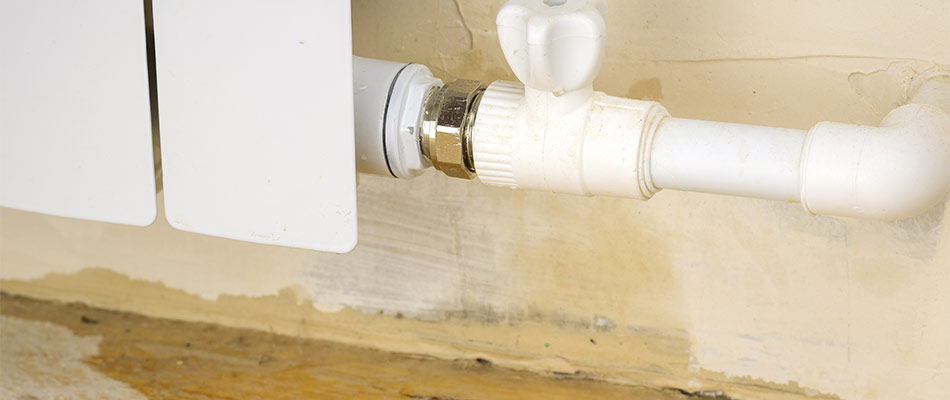6 Ways to Find Concealed Water Leakages in Your House
6 Ways to Find Concealed Water Leakages in Your House
Blog Article
What're your ideas about Detecting hidden plumbing leaks?

Early discovery of leaking water lines can minimize a prospective catastrophe. Some little water leaks may not be visible.
1. Take A Look At the Water Meter
Inspecting it is a guaranteed way that assists you find leakages. If it relocates, that suggests a fast-moving leakage. This suggests you might have a slow-moving leak that can even be underground.
2. Check Water Intake
Examine your water expenses and track your water usage. As the one paying it, you need to notice if there are any disparities. If you spot sudden changes, in spite of your consumption being the same, it suggests that you have leakages in your plumbing system. Remember, your water bill need to fall under the exact same array every month. An unexpected spike in your expense shows a fast-moving leak.
On the other hand, a steady increase every month, even with the same practices, reveals you have a slow leakage that's likewise slowly escalating. Call a plumber to thoroughly examine your building, particularly if you feel a warm location on your flooring with piping below.
3. Do a Food Coloring Examination
When it pertains to water intake, 30% originates from commodes. Test to see if they are running appropriately. Drop specks of food color in the storage tank and also wait 10 minutes. There's a leak between the tank and also dish if the shade somehow infiltrates your dish throughout that time without flushing.
4. Asses Outside Lines
Do not fail to remember to check your exterior water lines as well. Must water seep out of the link, you have a loose rubber gasket. One small leak can lose tons of water as well as surge your water expense.
5. Check and Evaluate the Scenario
Property owners ought to make it a routine to check under the sink counters as well as also inside closets for any type of bad odor or mold development. These two red flags indicate a leak so timely interest is called for. Doing regular assessments, even bi-annually, can save you from a significant problem.
More importantly, if you understand your home is currently old, maintain a watchful eye on your heating units, hose pipes, pipes etc. Check for stainings and weakening as many devices and also pipes have a life span. They will also naturally degrade because of tear and also use. Don't wait for it to rise if you presume leaking water lines in your plumbing system. Call a specialist plumber right away so you do not end up with a terrible mess in your house.
Early detection of leaking water lines can alleviate a prospective calamity. Some small water leakages may not be noticeable. Inspecting it is a guaranteed way that aids you find leaks. One tiny leakage can waste bunches of water as well as spike your water costs.
If you think dripping water lines in your plumbing system, don't wait for it to intensify.
WARNING SIGNS OF WATER LEAKAGE BEHIND THE WALL
PERSISTENT MUSTY ODORS
As water slowly drips from a leaky pipe inside the wall, flooring and sheetrock stay damp and develop an odor similar to wet cardboard. It generates a musty smell that can help you find hidden leaks.
MOLD IN UNUSUAL AREAS
Mold usually grows in wet areas like kitchens, baths and laundry rooms. If you spot the stuff on walls or baseboards in other rooms of the house, it’s a good indicator of undetected water leaks.
STAINS THAT GROW
When mold thrives around a leaky pipe, it sometimes takes hold on the inside surface of the affected wall. A growing stain on otherwise clean sheetrock is often your sign of a hidden plumbing problem.
PEELING OR BUBBLING WALLPAPER / PAINT
This clue is easy to miss in rooms that don’t get much use. When you see wallpaper separating along seams or paint bubbling or flaking off the wall, blame sheetrock that stays wet because of an undetected leak.
BUCKLED CEILINGS AND STAINED FLOORS
If ceilings or floors in bathrooms, kitchens or laundry areas develop structural problems, don’t rule out constant damp inside the walls. Wet sheetrock can affect adjacent framing, flooring and ceilings.
https://www.servicemasterbyzaba.com/blog/how-to-detect-water-leakage-in-walls/

As a keen reader about Hacks to detect leaks, I was thinking sharing that piece of content was beneficial. I beg you take the opportunity to distribute this blog post if you appreciated it. Thanks a bunch for your time. Come back soon.
Report this page